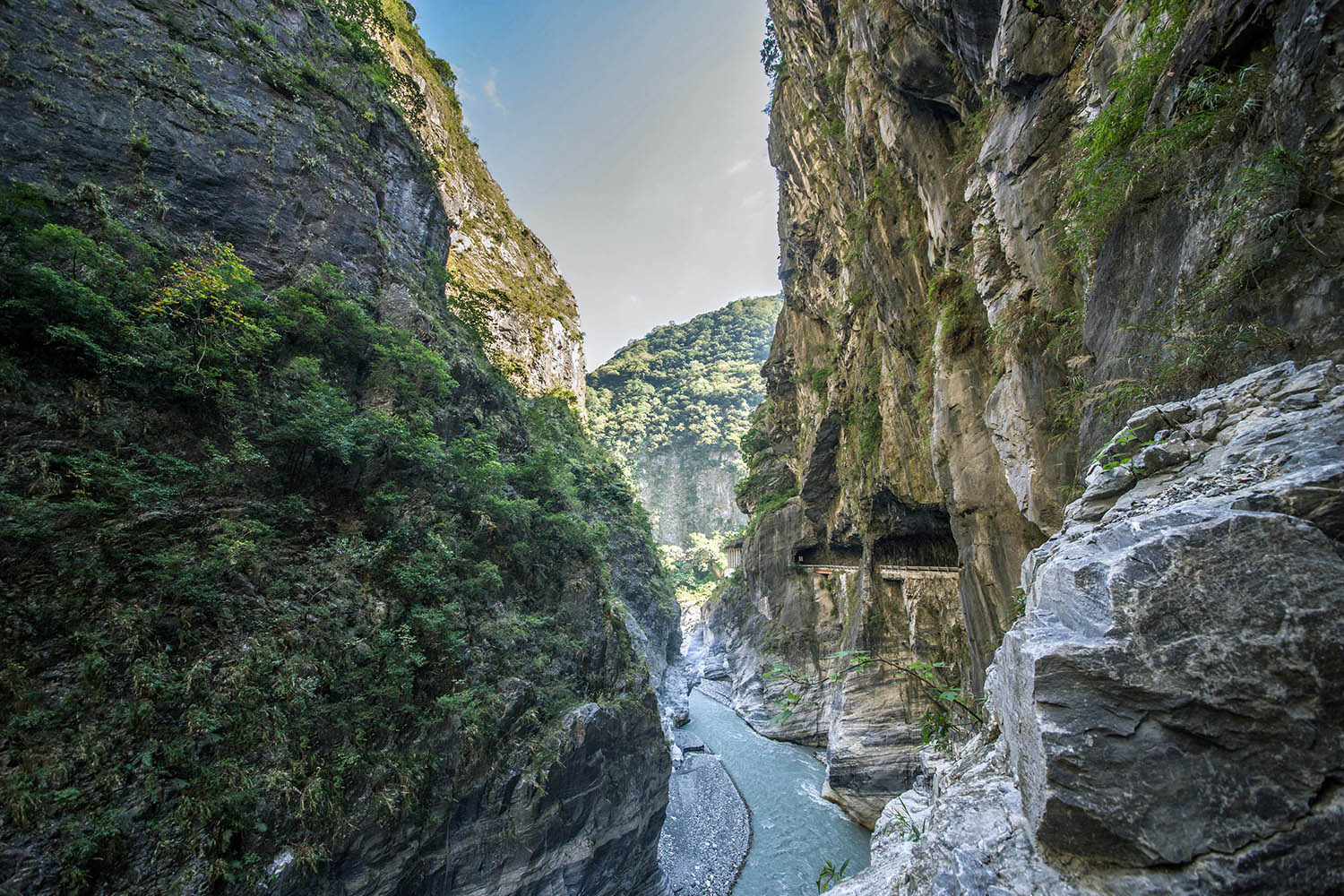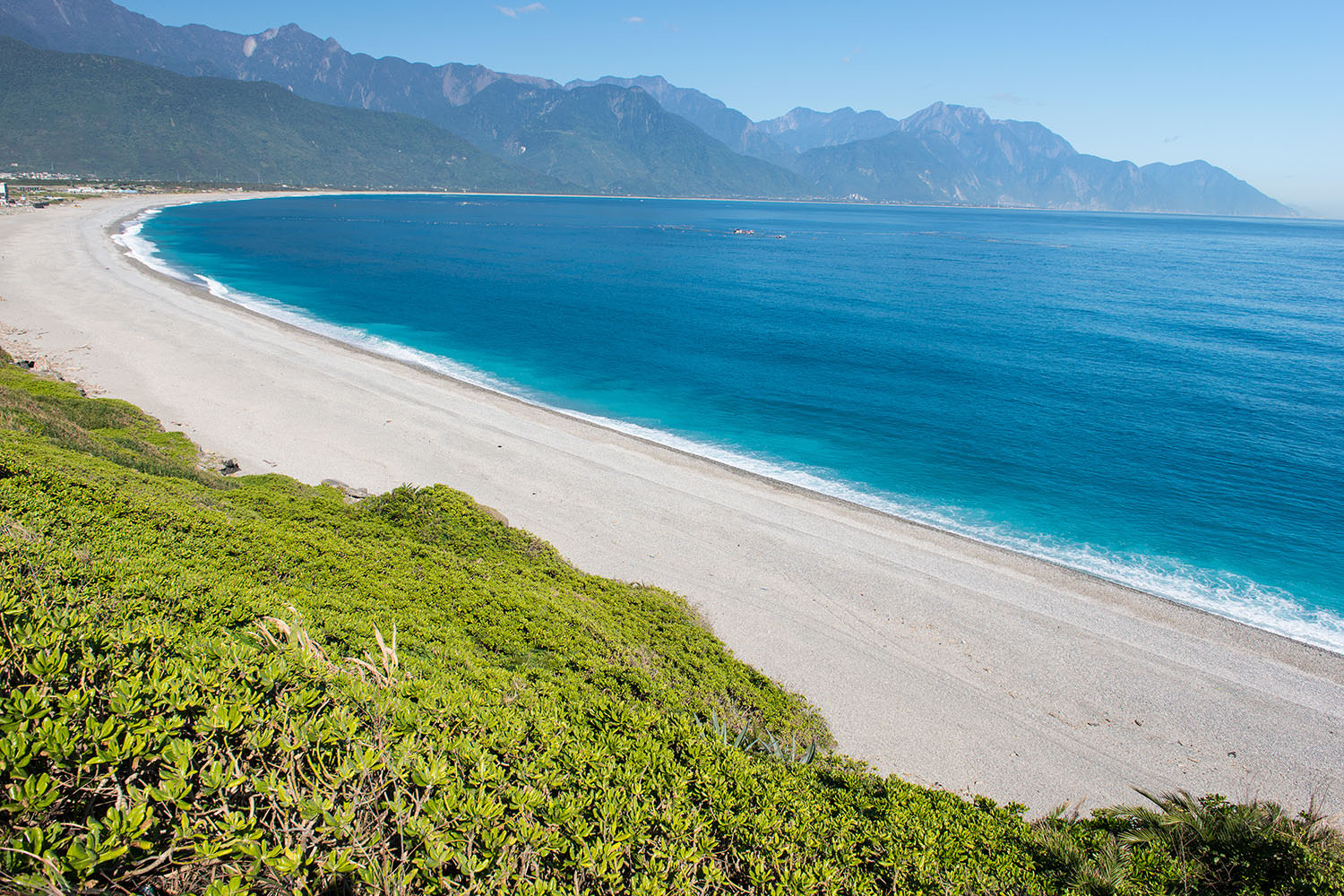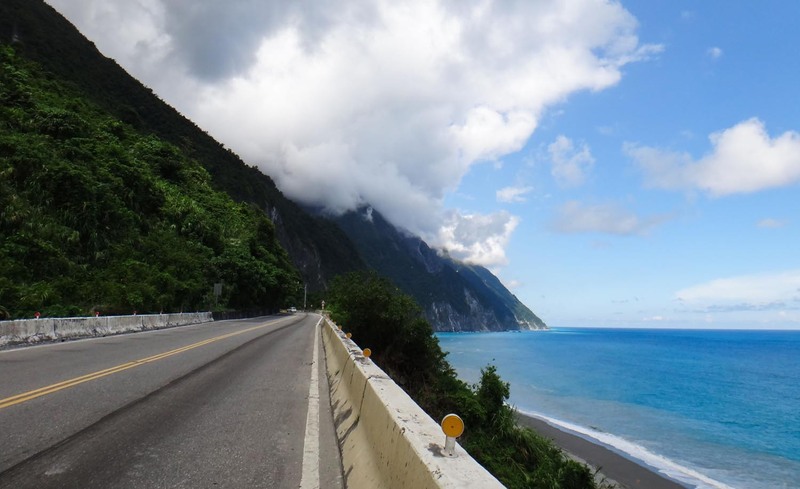
Hualien
- Home
- Hualien
Top 10 Must-Visit Hualien Attractions|Bucket List Guide
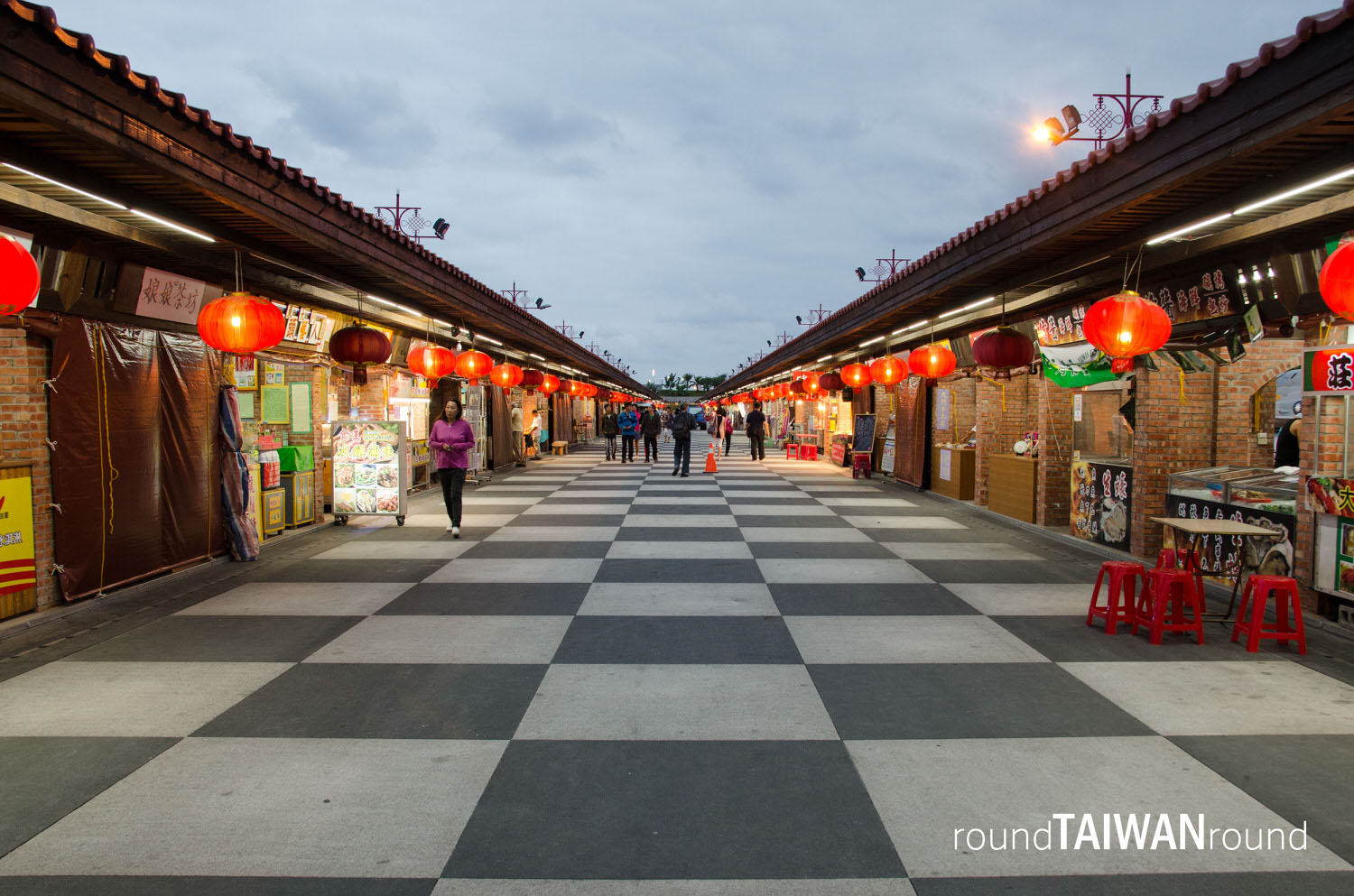 1
1East Gate Night Market
Ziqiang Night Market, which has long been a must-see for tourists going to Hualien, closed on the 30th of November 2015. Those stalls which had long accompanied the evenings of many tourists, like the one offering BBQ meat, fruit juice, or the seafood stall run by a handsome indigenous man, have now all become memories. In line with the reforms to Hualien’s tourism, the stalls at Ziqiang Night Market have been moved back to their original location at East Gate Night Market, which stands between Beibin Park and Nanbin Park. The reason it is called East Gate Night Market is because Hualien is Taiwan’s biggest gate to the Pacific Ocean.
East Gate Night Market has now been divided into three blocks, Fuding Night Market (福町夜市), street of the provinces, and an indigenous street. Fuding Night Market is like one that exists in memories, with vendors selling fun games, such as shooting darts, playing marbles and poking fun. Next to these is a mini climbing wall, which is the place that children most look forward to in the night market.
But the thing that leaves the deepest impression on visitors is the indigenous street, where you can buy aboriginal bamboo rice (竹筒飯), grilled mochi (烤麻糬), mountain pork (山豬肉) and magao sausages (馬告香腸). Most interestingly, there is a wide range of wild vegetables that you probably can’t even name, such as "lover's tears" (or rain mushroom雨來菇), which you would have to agree is a beautiful name. There are also chayote (佛手瓜) and wheel bitter squash (車輪苦瓜), which have an interesting flavour indeed. If you have the opportunity to come here, don’t miss out on giving them a taste. In addition, there is also a stage area in this night market where, if you're lucky, you can hear aboriginal people singing some traditional songs for you in beautiful voices. After you have finished browsing here, why not take a wander around Beibin Park or Nanbin Park? Followed by the sound of the waves of the Pacific, it will be the perfect end to your day.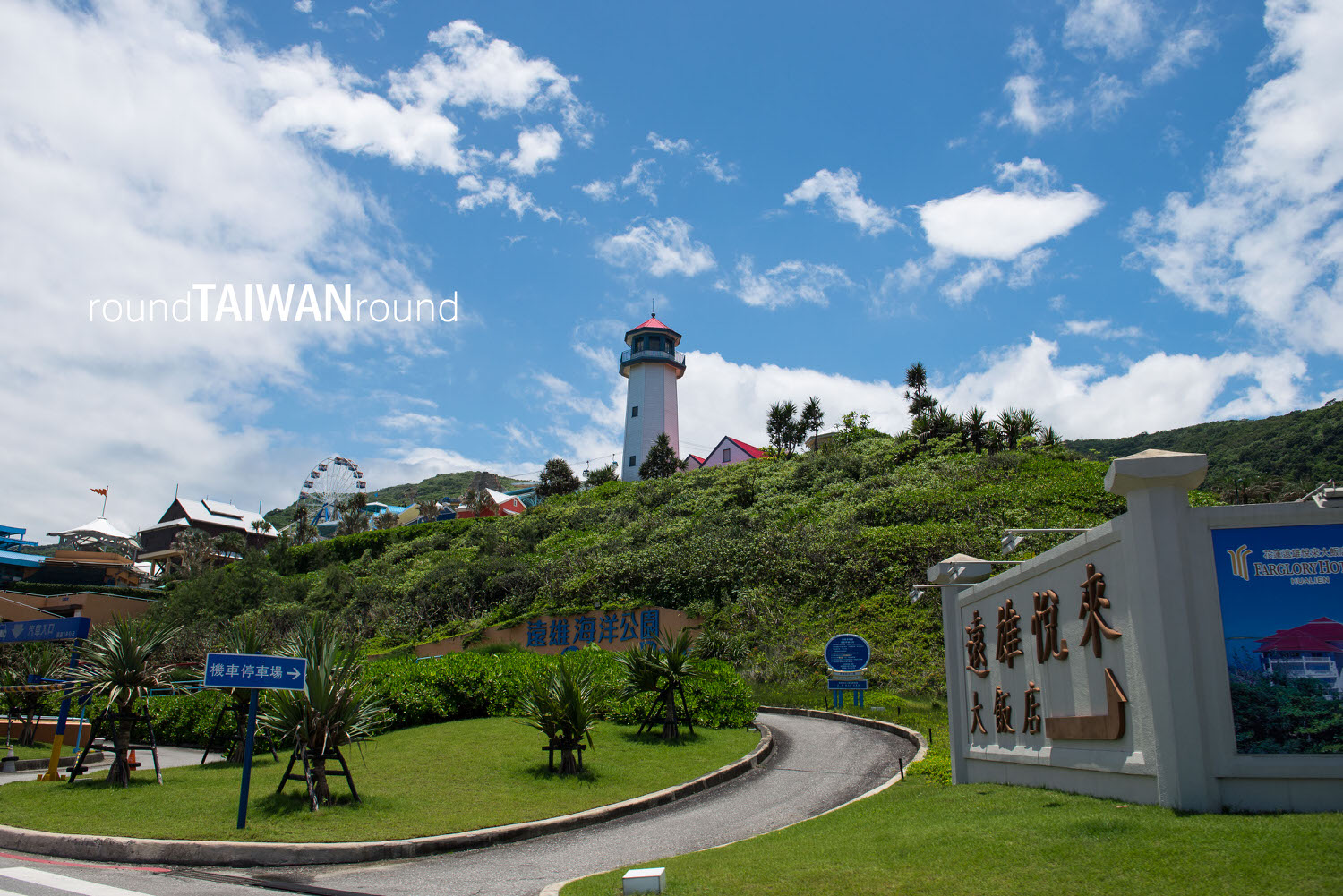 2
2Farglory Ocean Park
Located in the Shoufeng Township of Hualien, Farglory Ocean Park is the very first theme park in eastern Taiwan. Sitting right above the coastline, the amusement park not only boasts an incredible view over the Pacific Ocean but also covers a vast area of 51 hectares. It is divided into eight different sections: Mariner's Cove (海洋村), Discovery Island (探險島), Dolphin Lagoon (海洋劇場), Main Street (嘉年華歡樂街), Harbor Square(海盜灣), Brighton by the Sea (布萊登海岸), Underwater Kingdom (海底王國), and Crystal Castle (水晶城堡).
Near the entrance, Mariner’s Cove is home to a number of coastal-themed shops, and visitors are allowed to go up to the lighthouse to have some absolutely wonderful and clear views of the sea. Discovery Island houses a giant aquarium, where the adorable sea lions will turn the heads of small children who typically show interest only in creatures like teletubbies. From here, you can also take a fun ride on the cable car to get to Crystal Castle, and the views of the coastline offered on the way will be the sheer delight. At Dolphin Lagoon, of course, the dolphins show off their latest stunts. The 250-meter-long Main Street is full of food vendors and delivers a festive carnival scene where the ocean-themed mascots such as dolphins, sea lions, sharks, and even mermaids make sure you have fun with their company. The Ferris wheel at the far south end is a crowd magnet especially for the lovebirds. Harbor Square is known for its multitude of rides that are probably not for the fainthearted, while the amusement rides at Brighton by the Sea are much milder and suitable for all family members. Underwater Kingdom is tailored for very small kids, and Crystal Castle is a towering medieval castle where live performances such as musicals, magic and stunt shows take place.
We all know that Hualien is home to myriads of beautiful hiking trails that draw in seasoned hikers from all over the world, but not everyone is physically capable of going out on a serious hike, especially those traveling with kids and senior citizens. So what else can you do in Hualien as a family? Well, an extremely fun day at the very family-friendly Farglory Ocean Park for sure!- 3
Qixingtan
Located at the north end of Hualien City, Qixingtan Beach (七星潭) is one of the most beautiful beaches in Taiwan. Picture your ideal beach setting and Qixingtan would probably be it. The beautiful blue sky meets an endless Pacific expanse. The shore is bespeckled with white and black gravel that is smooth to the touch. A canopy of clouds seems to crown the mountains that embrace the coastline. This is the kind of beach that might be listed as one of the most beautiful landscapes in the world. Though largely a secret to the outside world, Qixingtan's scenery is famous among the Taiwanese.
In the daytime, the Qingshui cliffs (清水斷崖) can be seen in the distance. In the evening, the beach serves as an ideal spot for stargazing. If you hear a thunderous roar from behind, don't be startled, just look to the sky and you may catch sight of an F-16 fighter jet taking off from the nearby Hualien Air Force Base.
If you're an early riser, a sunrise at Qixingtan would be a great start to a day in Hualien. Then again, with the final rays of the day on your back, you may also enjoy a romantic stroll on the shore at sunset, or a family bike tour along the coastal bikeway. The quiet sweeping of the waves across the pebbled shore is telling you something: slow down and enjoy your vacation.
Fireworks are not permitted at Qixingtan Beach due to its vicinity to Hualien Airport.
Ask us about our guided tour for a deeper experience at Qixingtan Beach. Our friendly guides know where sells the best beer and seafood nearby, perfect for relaxing after your time at the beach!  4
4A Zone
Converted from the old Hualien Winery complex of just over three hectares, A-Zone is now a creative park and cultural hub where the former 26 warehouses are open to the public as exhibition spaces, performance venues, restaurants, shops and tourist information center. The winery used to produce saké during the Japanese Colonial Era, and the quaint charms of its Japanese architecture are fortunately retained, making A-Zone a highly raved hotspot in the city of Hualien.
There is a lot to do here. Check out some local bands in the former packing house, which is now a live house where indie music is free to be expressed. If you are more interested in the local art scenes, head to the art gallery that was converted from the old lab where the recipes for rice wines were once perfected. You will also find several shops selling locally made products, everything from fashion items to antiques, music, artworks, and many more. If you ever get hungry, just so you know, the old admin building now houses a Western-themed restaurant named Andante Bistro. What’s worth noting is that Andante House provides 13 separate cabins in a Japanese setting, all of which are fully-equipped with parlors, bedrooms and Japanese gardens, to those who would like to experience how it is like to live like a real Japanese.- 5
Qingshui Cliff
The magnificent area around Qingshui Cliff has been designated as one of the Eight Wonders of Taiwan. Qingshui Cliff is the only place in Taroko National Park where you can witness the three distinct color tones that make up the Pacific Ocean. Indeed, the color of the cliffs, together with those of the Pacific coastline and blue sky impress all who visit here. Chongde Beach (崇德礫灘) and its pebble coast complements the natural mosaic of colors that paint Qingshui Cliff above.
We recommend parking on the north side of Chongde Tunnel, where you can enjoy a splendid view of the ocean and cliffs from an observation deck. Following the Chongde Trail for about ten minutes down to the beach, you will see the Suhua Highway seem to disappear into the cliff. The ingenuity of the design will leave you puzzling just how this road section was built.
While most visitors to Taiwan head for Taroko Gorge without stopping by at Qingshui Cliff, a visit to Hualien would not be the same without including this beautiful place.
Swimming is prohibited at Chongde Beach. Beware of falling rocks and strong waves while walking on the beach. You need to check the Daily Trail Conditions and Daily Road Conditions on the Taroko National Park website before visiting Taroko. You can refer to “Chongde Trail”. Also, it is not recommended to ride bikes or scooters here as there are many dangerous trucks that travel between Taipei and Hualien on the Suhua Highway.
Join us on our Taroko tour for a holistic sense of Hualien without the hassle of dealing with complicated and infrequent public transport. Also get in touch if you are interested in arranging to see Qingshui Cliff from canoes in the Pacific Ocean- highly recommended!
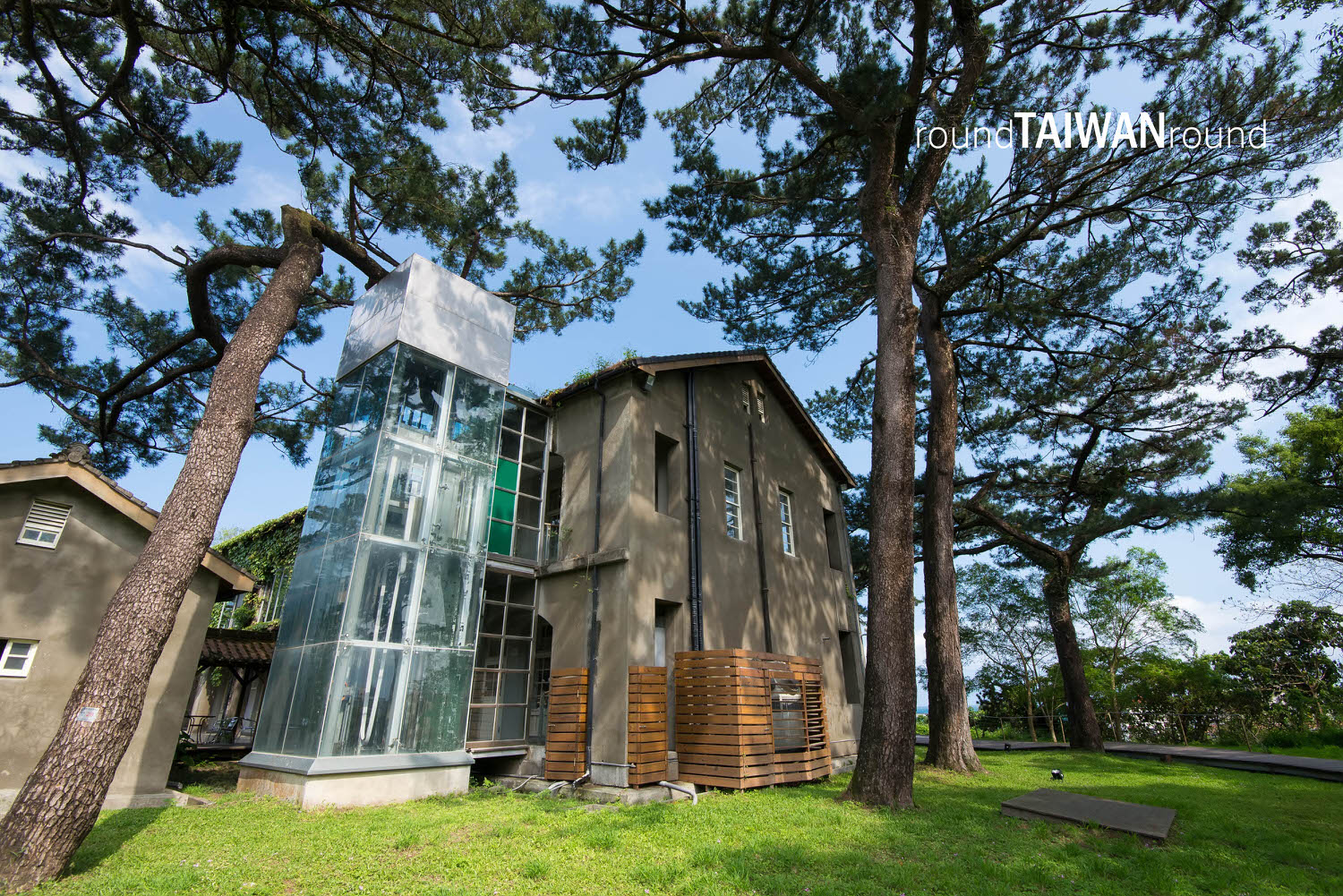 6
6Pine Garden
Established in 1942, Pine Garden that served as a command center during the Japanese Colonial Era is now the best-preserved Japanese military structure in Hualien. It boasts a touch of Japanese charm and will transport you back to the old days of Taiwan.
Situated at the highest point of Hualien City and overlooking the Hualien Harbor and the Pacific Ocean, Pine Garden was a strategic point of high importance that allowed the Japanese forces to command their battleships and fighter aircrafts without any difficulty. At the end of World War II, numerous special attack units such as kamikaze (神風特攻隊) were developed for suicide missions, in a desperate move to compensate for the annihilation of the main fleet. It it said that before the kamikaze pilots went on their last missions, a special ceremony would take place here at Pine Garden, where they received a glass of wine bestowed by the emperor. Later, during the renovation of Pine Garden, visitors often heard greetings in Japanese but never saw anyone around them. Locals started to believed that Pine Garden has been haunted by the Japanese pilots. As creepy as it may seem, urban explorers and thrill-seekers are still drawn here to seek out the mysteries that lie behind the walls, especially during the ghost month. After World War II, Pine Garden was turned into a vacation resort operated by the U.S. Army. Today, it is a prestigious cultural hub dedicated to poetry in the beautiful city of Hualien.
Pine Garden allows guests to appreciate the century-old pine trees at different times of the day when the light hits the scene from different angles. When you look across to the east, the calm and serene Pacific Ocean will greet you from the distance with a sense of bliss.
Notice:
Closed on the second and fourth Tuesday of each month.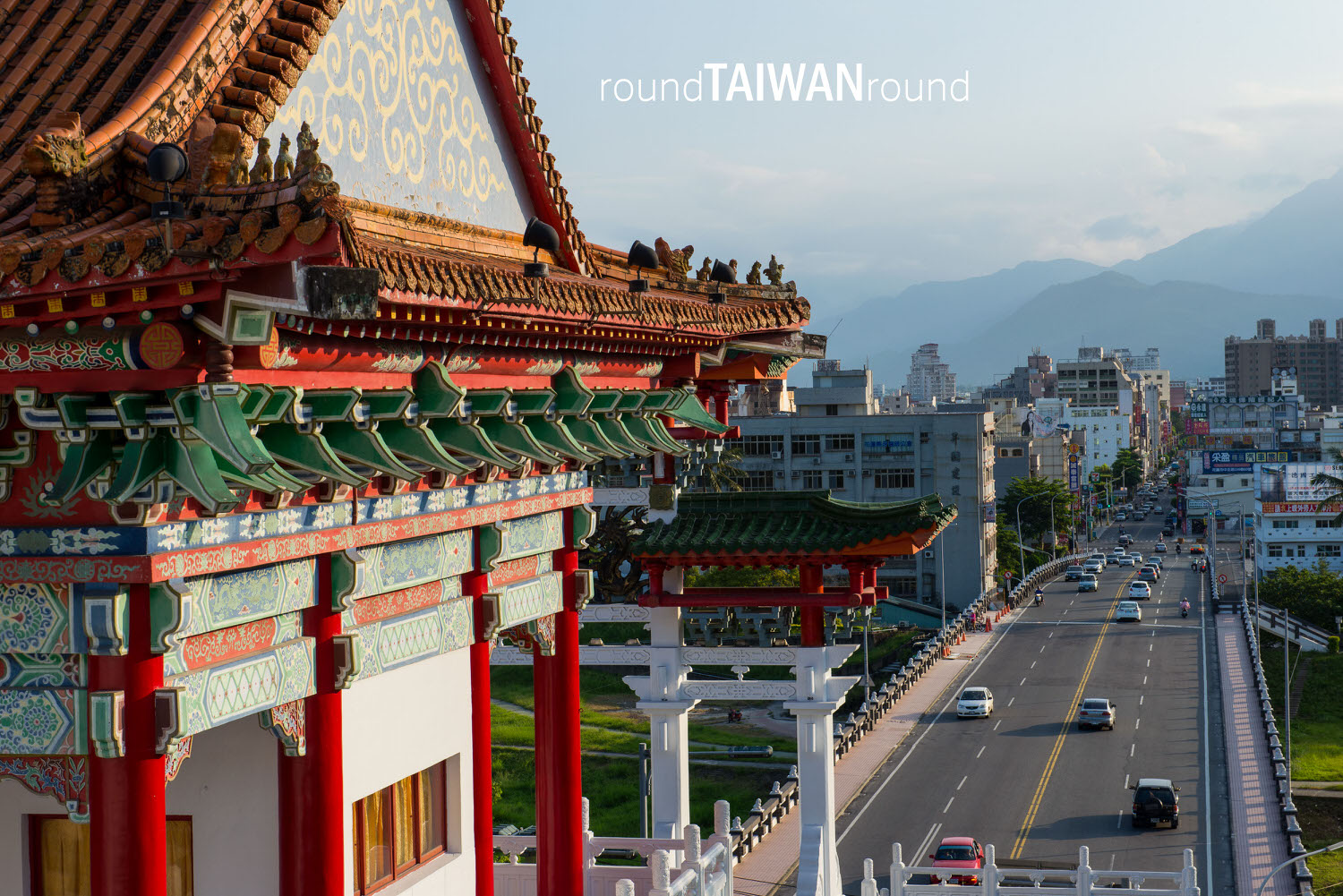 7
7Hualien Railway 1909
For fifty years, Taiwan was ruled as a Japanese colony, and its colonial master has left a stupendous impact over the island — culturally, historically and culinarily. For example, Hualien Railway 1909 has some great stories to tell about the colonial past.
Hualien Railway 1909 was converted from the former office where Japanese engineers stayed during their business trips to Taiwan. Today, there are two buildings in the complex serving different purposes. The first one is the administrative office hidden in a traditional courtyard house with a spire on top, where historical records and photographs are kept. From old railway facilities to train tickets and nostalgic uniforms, these material preserved from the Japanese Colonial Era will help you better understand the colonial history of Taiwan and how it was written.
The second building is now where Hualien Farmers Market takes place every Saturday. At the market, you can find local organic produce in abundance, and it has been drawing a surprising amount of people who come to understand the health and social benefits of organic produce. Sometimes, the market features special events, including musical performances and cooking demonstrations. Combined with culture, history and environmental protection, Hualien Railway 1909 is a great place for adding exploration to your travel experience.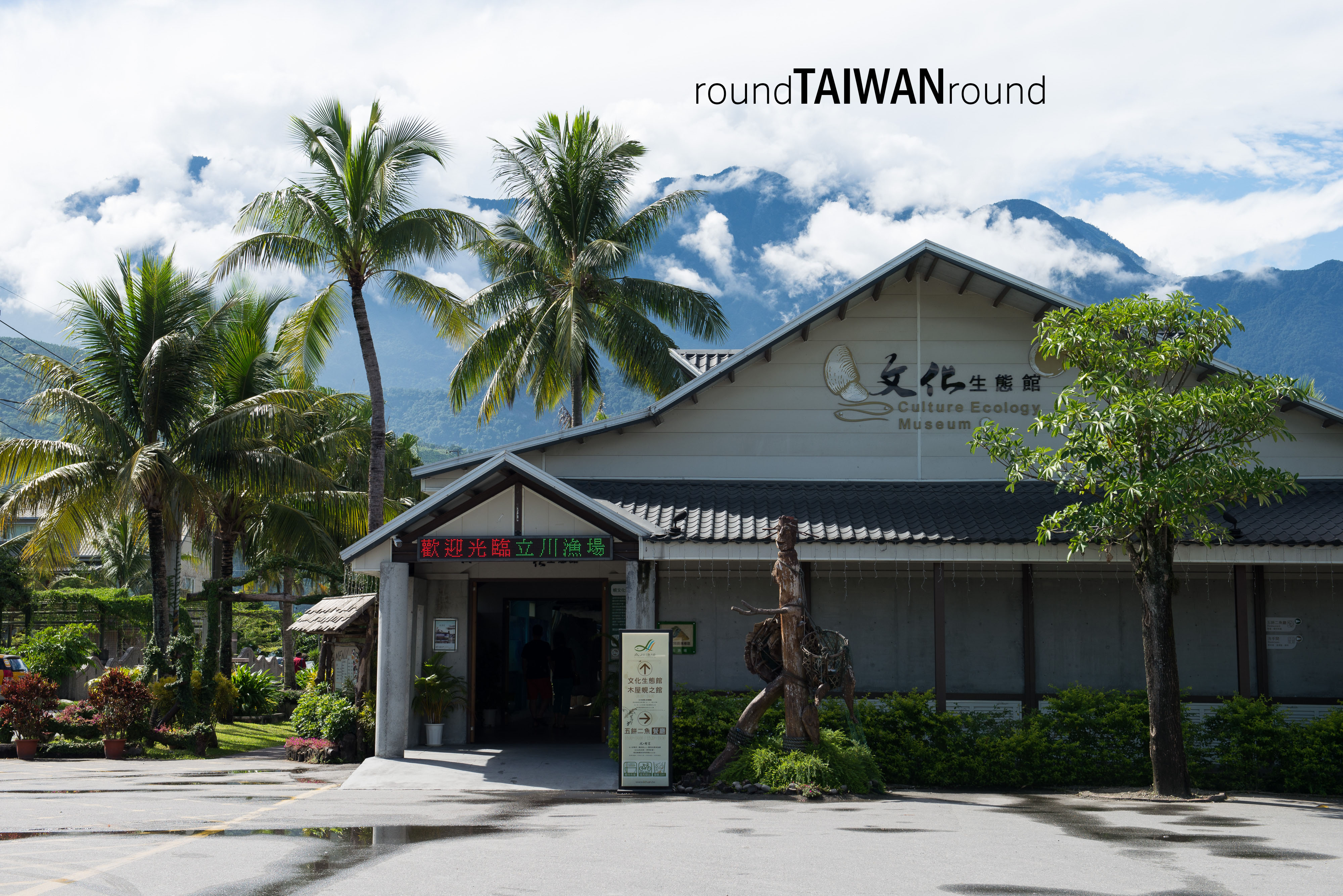 8
8Lichuan Clam Farm
Li Chuan Aquafarm (立川漁場) is located in Shoufeng Township, Hualien County, and is a great stop for travelers heading towards Taitung from downtown Hualien. For an admission fee of 200 NTD, visitors can enjoy the experience of clam digging in the pool. The entire park is divided into the Cultural Ecology Hall, Clam Processing Factory, Grace Bell, Clam Pavilion, Clam Digging Pool, Five Loaves and Two Fish Restaurant, and Cultural Collection Hall, providing plenty of entertainment for children and making it an ideal destination for families in the summer.
When digging for clams, it's important to check if they are alive to avoid any unpleasant odors in the box. It's also advisable to consider the cleanliness of the water before the visit. Additionally, it's recommended to bring a change of clothes for the clam-digging experience. The park provides restroom facilities for freshening up after the activity. Afterward, visitors can enjoy a flavorful lunch at the restaurant, with the signature dishes being the Princess Fish and Stir-Fried Clams, highly recommended! 9
9MEQMEGI
Mu Gu Mu Yu is located in Tongmen Village, Xiulin Township, Hualien County, and is a travel destination that combines natural landscapes with cultural experiences. Situated at the northern end of the Huadong Valley National Scenic Area, it is adjacent to the Mugua River and surrounded by natural wonders such as cliffs, ancient tunnels, and mountain waterfalls. The natural environment of Mu Gu Mu Yu attracts many visitors, but what is even more noteworthy is the cultural imprint found here.
Tongmen Village is a place deeply rooted in the culture of the Taroko people, known for its unique knife-forging techniques. The village still preserves the traditional lifestyle of the Taroko tribe and is the only indigenous community in Taiwan famous for forging knives, earning the title "Hometown of Mountain Knives." At this destination, visitors can personally experience this invaluable craft and learn about the history and beliefs of the Taroko people.
Mu Gu Mu Yu offers a variety of travel activities that allow visitors to explore the land in depth. Strolling along the Emerald Valley Trail, one can enjoy stunning natural scenery along the Mugua River and its tributaries. After finding suitable guided services, guests can also indulge in local culinary experiences such as bamboo rice and banana rice. Moreover, the cultural activities of the Taroko people are a must-see, including dance classes and DIY handicrafts, providing visitors with a deeper understanding of the local culture.
The accessibility of Mu Gu Mu Yu is also one of its attractions, making it easy to reach whether driving or using public transportation. The area is well-equipped with facilities, and guesthouses offer parking, restaurants, and other necessary amenities, making it an excellent choice for family trips or corporate team outings. Most of the guesthouse operators here are cultural and historical workers of the Taroko tribe, who can share in-depth knowledge, ensuring that each trip is meaningful.
 10
10Shakadang Trail
The Shakadang Trail (砂卡噹步道), also known as “Mysterious Valley Trail” is famous for its crystal-clear turquoise water strewn with imposing marble boulders. Like Lushui Trail, Shakadang Trail is suitable for all ages and definitely worth a visit if you adore natural landscapes. The entrance to the trail is located at the exit of Shakadang Tunnel and includes a parking lot and bathroom facilities.
In contrast with the wild and violent Liwu River, the Shakadang Stream flows much more gently. Along the path, you may notice local Taiwanese tourists dipping their feet in the water. In these areas, water slows to a crawl and forms small pools shallow enough to wade through. Be ready for a tickle though! If you're lucky, small fish traveling the length of the stream will stop at your bare feet for a nibble. Not to worry, this is more like a free foot exfoliation, as the fish look for dead skin to enjoy.
Back on the path, head further upstream and you'll be treated to something unique: the Shakadang Trail passes through a Truku tribal village. Though entry into their reservation is prohibited, a small market is open to visitors and features local artisans and food vendors welcoming you to sample some indigenous delights.
Though an easy walk (roughly 2 hours round trip, little elevation change), make sure to watch your head when passing under overhanging rock faces.
Notice:
Keep in mind that there are no lifeguards on duty in Taroko National Park. Rocks can be slippery when wet and playing in water is at your own risk.
Due to the destruction caused by Typhoon Saola in 2012, the scenery of Shakadang Trail was severely damaged and most of the crystal-clear turquoise water was filled by landslides. The good news, however, is that the scenery has improved after half a year of self-recovery. The amazing capacity of nature for both creation and destruction can truly be felt while walking this trail.


